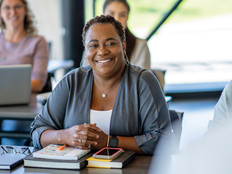Arkansas Revamps K–12 Distance Education Program
Arkansas is overhauling the way it delivers its K–12 distance learning courses, from live video conferences to a fully web-based model.
For the past 10 years, students taking courses through Arkansas Distance Learning Services watched lectures and interacted with their teachers through a live, two-way feed using high-end video conferencing equipment.
The new delivery system — which includes web-based learning management systems and online video conferencing software tools — uses less bandwidth, is more cost-effective, and provides students a more interactive and personal distance learning experience, says Cathi Swan, state coordinator of K–12 digital learning services.
"We're trying to make learning interactive with audio, video and electronic textbooks, and to provide different forums for discussions and group projects," she explains.
Arkansas initially developed its K–12 distance learning program to address a teacher shortage, supplement each district's regular classroom courses and provide students access to classes that may not be available in their individual districts, Swan says.
But a new state law requires every high school student to take at least one online course before they graduate. The goal is to prepare students for college and the workforce, where they may have to take online courses or use online collaboration tools.
Over the past year, the distance learning program began transitioning from real-time video conferencing courses to a web-based delivery model through a new website called Virtual Arkansas. To date, the program serves 187 school districts and teaches about 12,000 students.
The distance learning program's 87 teachers have received professional training on building an online curriculum. All distance learning courses will be fully web-based in the 2014–2015 school year, Swan says.
The online courses — accessible any time, day or night — will mix synchronous and asynchronous learning. Teachers will still meet with their students occasionally through online video conferencing software, but students also will be asked to watch video lectures and then complete assignments. The move will allow teachers to provide more personalized instruction to their students, Swan says.








